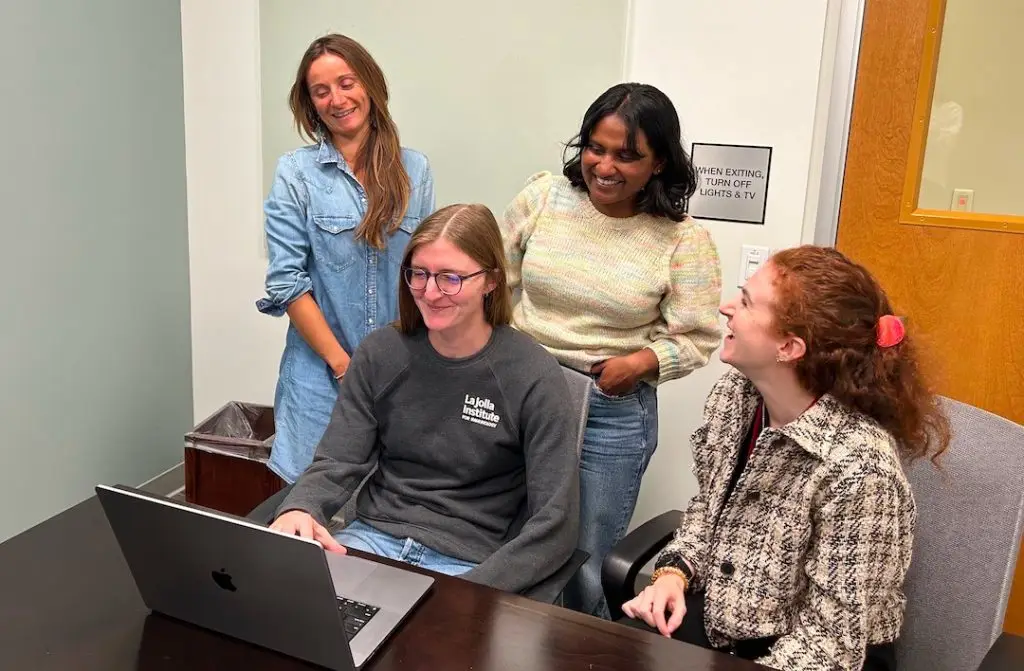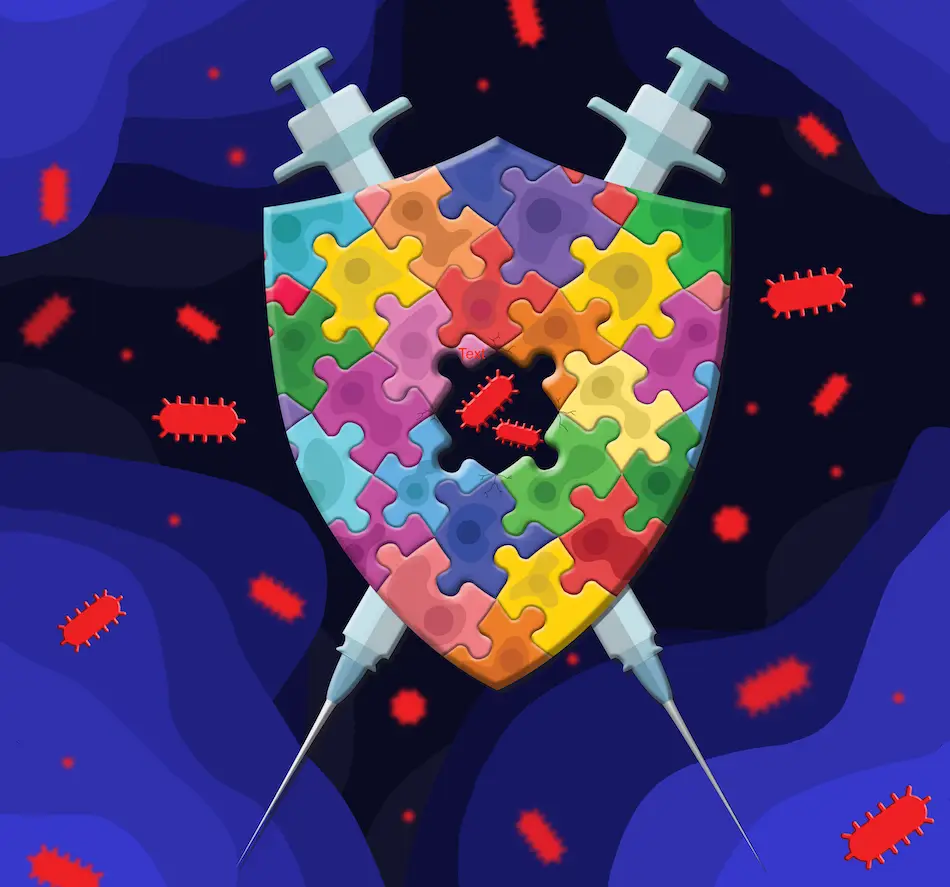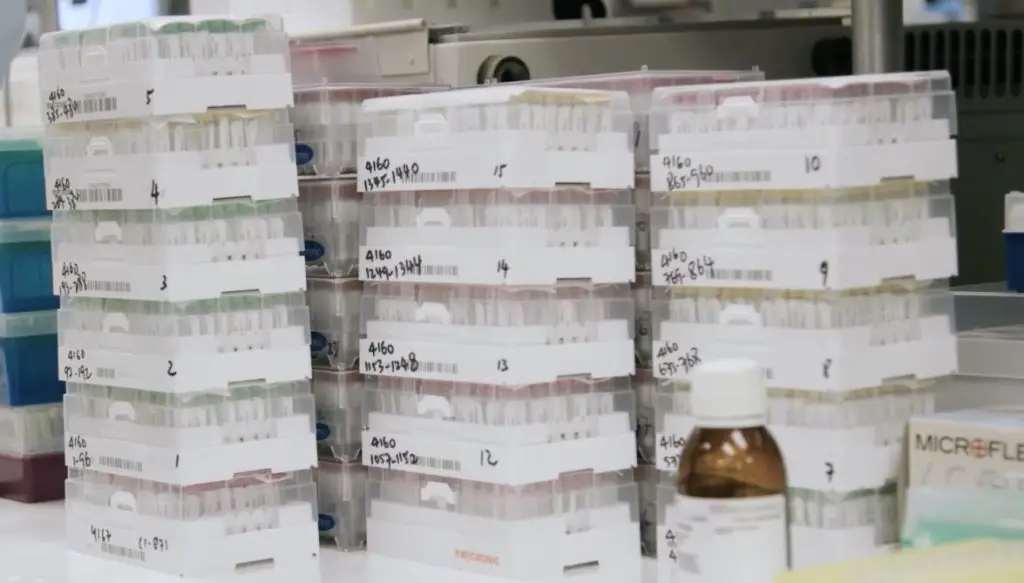Whooping Cough
Whooping cough (pertussis) often begins like a cold but then progresses to a severe cough punctuated by sharp breath intakes resembling “whoops.” This extremely contagious condition is caused by the bacterium Bordetella pertussis and can be fatal in newborns.
Pertussis was thought eradicated in the United States following the introduction of a vaccine in the 1950s. At that time, children received the wP (“whole-cell”) vaccine, which was effective but phased out due to rare side effects. By the mid-90s the dominant pertussis vaccine was an “acellular” (aP) form, now administered in childhood as a vaccine combination called DTaP (diphtheria, tetanus and acellular pertussis). Today, most pertussis vaccine protocols involve five injections in early childhood, and then children at 11 and 12 years old receive a booster, as do pregnant women and adults at risk for whooping cough.
However, in 2010, California health officials reported a pertussis epidemic and began fearing whooping cough re-emergence, partly due to some parents’ decision to opt out of childhood immunizations (despite ample evidence of safety). By 2015, over 20,000 pertussis cases had been reported nationwide, many occurring in teenagers originally vaccinated with the aP vaccine. Since then, many researchers, including those at LJI, have been closely comparing immunity conferred by the aP versus wP forms of the vaccine—and asking how to build a novel vaccine that would be both safe and effective.
Our Approach
Concerned over potency differences in pertussis vaccines, LJI Professor Alessandro Sette, Dr. Biol. Sci., has compared the kinds of T cell responses elicited in individuals administered the aP versus wP vaccines.
Dr. Sette’s team studied healthy adults who had undergone standard vaccination protocols with either wP or aP vaccines. His team inoculated subjects with aP vaccine boosters and evaluated immune responses, looking particularly at T cells in their blood. Following the booster, the study volunteers showed differing T cell responses and subtle shifts in B cell population, depending on whether they had received the wP or aP vaccines. Interestingly, T cells from those who had received the aP vaccine gradually lost their ability to respond to booster vaccination, while those primed with wP responded to the boost with a pronounced activity increase, marked by emergence of a unique gene expression profile, or “immune signature.”
This LJI study supported a theory that T cells in people vaccinated as children with wP have a better functional “memory” of the pathogen than T cells from people who received the aP form. Several novel ideas have emerged from this study. One is that the potency and durability of future vaccines might be judged by evaluating an individual’s T cell gene signature. Another is that a next-generation pertussis vaccine resembling a hybrid of aP and wP immunogens might elicit both a safe and durable response.
In 2023, Dr. Sette and his colleagues published a closer look at T cell responses to the wP vaccine versus the aP vaccines. This work was important because scientists had previously characterized human T cell reactivity to the four main antigens present in the aP vaccine, but they did not have clear picture of the human immune response to other B. pertussis antigens.
For the study, the LJI scientists set out to map the landscape of T cell reactivity against the entire B. pertussis proteome. This closer look at T cell reactivity would then help the researchers determine whether there are differences in the breadth, magnitude, and type of immune response between individuals who received wP versus aP vaccines.
The scientists found that the overall pattern and magnitude of T cell responses to aP and non-aP vaccine antigens were similar regardless of which vaccine the individual had received. This was quite a surprise because people immunized with the aP vaccine should have had a more limited T cell response. Still, this broader T cell response appears to still leave some people vulnerable to asymptomatic infection.
Dr. Sette says the aP vaccine likely produces an immune response to the four main B. pertussis antigens that is effective enough to prevent severe disease, but not very good at preventing subclinical infections. This would lead a large number of people to unknowingly become infected and act as carriers of B. pertussis, spreading the bacteria to those more vulnerable to the disease.
LJI Professor Bjoern Peters, Ph.D., and his colleagues have accelerated pertussis vaccine research by establishing an annual competition through the NIH-funded Computational Models of Immunity network. The competition challenges research to analyze immune system data and offer up their best predictions regarding B. pertussis (whooping cough) vaccination.
Learn more:
Related News
- Research News
- Research News
Research Projects
Research to identify mechanisms and correlates of long-lasting vaccine-induced immunity to whooping cough. The lab aims to define transcriptional responses to vaccine boost from donors originally primed with aP vs. [...]





